Pranav Kumar
Diffusion Meets DAgger: Supercharging Eye-in-hand Imitation Learning
Feb 27, 2024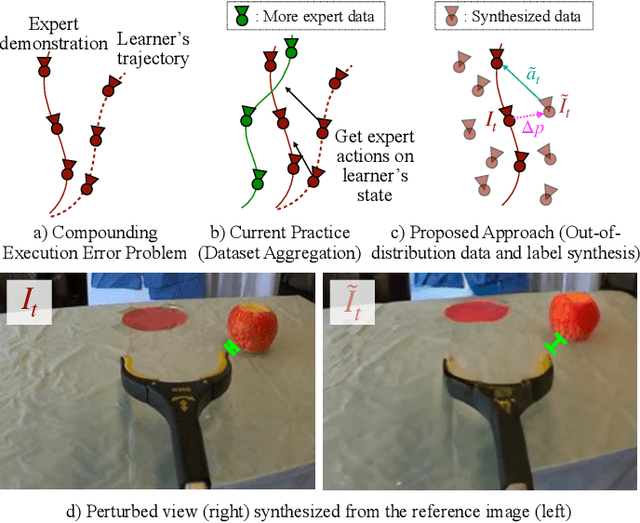
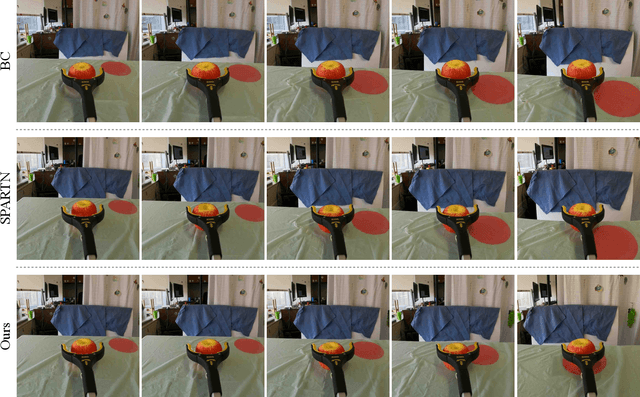
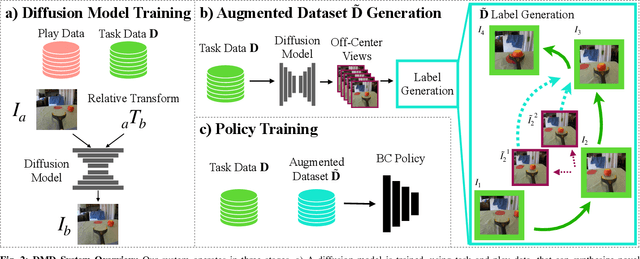
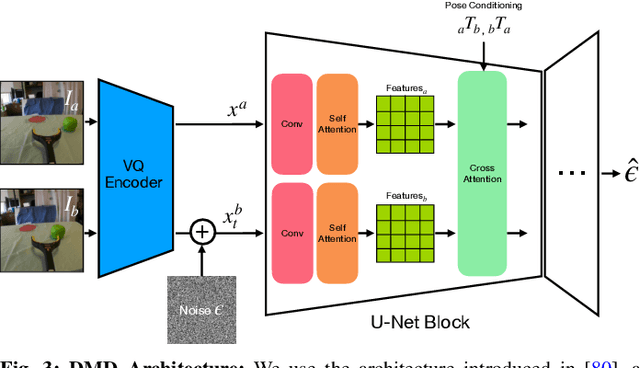
Abstract:A common failure mode for policies trained with imitation is compounding execution errors at test time. When the learned policy encounters states that were not present in the expert demonstrations, the policy fails, leading to degenerate behavior. The Dataset Aggregation, or DAgger approach to this problem simply collects more data to cover these failure states. However, in practice, this is often prohibitively expensive. In this work, we propose Diffusion Meets DAgger (DMD), a method to reap the benefits of DAgger without the cost for eye-in-hand imitation learning problems. Instead of collecting new samples to cover out-of-distribution states, DMD uses recent advances in diffusion models to create these samples with diffusion models. This leads to robust performance from few demonstrations. In experiments conducted for non-prehensile pushing on a Franka Research 3, we show that DMD can achieve a success rate of 80% with as few as 8 expert demonstrations, where naive behavior cloning reaches only 20%. DMD also outperform competing NeRF-based augmentation schemes by 50%.
Black holes and the loss landscape in machine learning
Jun 26, 2023Abstract:Understanding the loss landscape is an important problem in machine learning. One key feature of the loss function, common to many neural network architectures, is the presence of exponentially many low lying local minima. Physical systems with similar energy landscapes may provide useful insights. In this work, we point out that black holes naturally give rise to such landscapes, owing to the existence of black hole entropy. For definiteness, we consider 1/8 BPS black holes in $\mathcal{N} = 8$ string theory. These provide an infinite family of potential landscapes arising in the microscopic descriptions of corresponding black holes. The counting of minima amounts to black hole microstate counting. Moreover, the exact numbers of the minima for these landscapes are a priori known from dualities in string theory. Some of the minima are connected by paths of low loss values, resembling mode connectivity. We estimate the number of runs needed to find all the solutions. Initial explorations suggest that Stochastic Gradient Descent can find a significant fraction of the minima.
An Unsupervised Approach for Overlapping Cervical Cell Cytoplasm Segmentation
Feb 17, 2017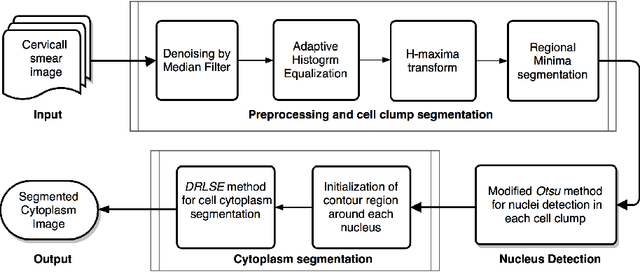
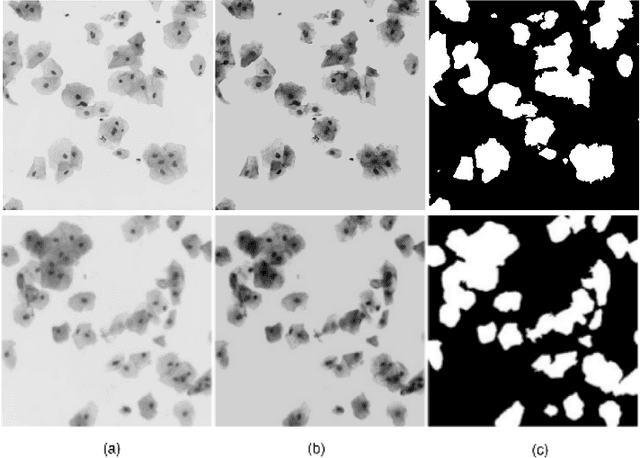
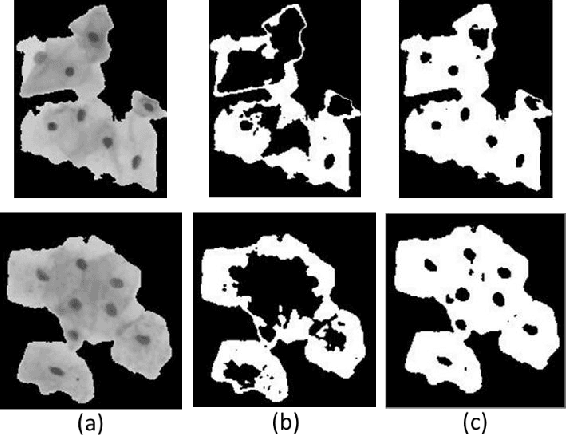

Abstract:The poor contrast and the overlapping of cervical cell cytoplasm are the major issues in the accurate segmentation of cervical cell cytoplasm. This paper presents an automated unsupervised cytoplasm segmentation approach which can effectively find the cytoplasm boundaries in overlapping cells. The proposed approach first segments the cell clumps from the cervical smear image and detects the nuclei in each cell clump. A modified Otsu method with prior class probability is proposed for accurate segmentation of nuclei from the cell clumps. Using distance regularized level set evolution, the contour around each nucleus is evolved until it reaches the cytoplasm boundaries. Promising results were obtained by experimenting on ISBI 2015 challenge dataset.
* 4 pages, 4 figures, Biomedical Engineering and Sciences (IECBES), 2016 IEEE EMBS Conference on. IEEE, 2016
 Add to Chrome
Add to Chrome Add to Firefox
Add to Firefox Add to Edge
Add to Edge